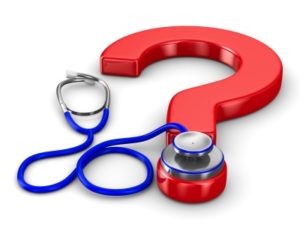Chiropractic, Physiotherapy, Osteopathy and Massage in Ontario
Chiropractors, physiotherapists, osteopaths, massage therapists…the options can be confusing. Quite often I have patients ask me about the differences between these disciplines. Interestingly, there seems to be some confusion as to what each discipline offers and what they are trained to do. In fact, a patient of mine was quite surprised this week when I answered her questions about spinal manipulation.
Who can adjust my spine?
In Ontario, the provincial government has established a list of controlled acts. This means that these procedures are monitored by governing bodies. These acts require a considerable amount of education and skill to be performed safely. Perhaps it can be said that these acts might be dangerous if they are performed by unskilled or unqualified practitioners. Surprising to one of my patients this week, spinal manipulation (or a spinal adjustment) is a controlled act! Are you being adjusted by a qualified practitioner?
Chiropractic in Ontario
A chiropractic adjustment (as it is traditionally known) involves a precise, controlled, gentle, high velocity maneuver that takes a joint to what is called the paraphysiological space. The paraphysiological space is a range of joint motion. When a joint is taken into this paraphysiological space (or range of movement) it makes a “popping” noise. A chiropractor learns to perform this procedure over a full-time, four year chiropractic curriculum to ensure that it is performed safely and effectively.
In Ontario, the act of intentionally “popping”, “adjusting” or “manipulating” a joint to the point where the joint makes the characteristic audible cavitation sound is a controlled act. In other words, the only practitioners that are allowed to perform this procedure are chiropractors, physiotherapists (who have achieved the appropriate levels of additional training) and medical doctors. No other health care disciplines in Ontario are allowed to perform this procedure. In fact, it is my understanding that it is actually illegal. The same way you cannot practice medicine without a license, no person in Ontario is allowed to intentionally “adjust” someone’s spine unless they are a chiropractor, physiotherapist or medical doctor. This is for safety!
Who can diagnose my condition?
Conferring a diagnosis is also a controlled act. Again, to ensure safety for the general public, only certain practitioners are allowed to diagnose your condition. A general rule of thumb is that the practitioner should have the “doctor” title. In Ontario, chiropractors, medical doctors, dentists, optometrists and psychologists are the only professions allowed to diagnose a condition. Chiropractors (for example) have been taught how to rule out the various causes for symptoms (both benign and sinister) and when to refer for additional tests like x-rays. Keep in mind that other practitioners are allowed to give you their clinical opinion of your condition, but this is different from an actual diagnosis. This is one reason that many insurers require a patient to visit their medical doctor prior to having massage therapy or physiotherapy.
Massage Therapy in Ontario
Navigating the path of alternative health care can be tricky sometimes. For example, hands-on manual therapy is not a controlled act. You can get a massage at a clinic from a person who is not a registered massage therapist and it is not illegal. More than likely though, you won’t get reimbursed by your insurer (if you have coverage) and you cannot ensure that the person knows what they are doing and know how to do it safely. In order to ensure this, there is a college of massage therapy that regulates the profession. Therefore, most people seek the assistance of a registered massage therapist or an “RMT”.
Regulated or not regulated?
In Ontario, we have a College of Massage therapists, College of Chiropractors, College of Physiotherapists and College of Physicians and Surgeons (to name a few). The purpose of these regulatory bodies is to protect the public. They have structure and procedures which ensure that each practitioner is qualified and “following the rules” as laid out by that college. Not all practitioners have a regulatory college. For example, in Ontario, Osteopathy is not a regulated profession. This means that anyone is allowed to call themselves an Osteopath and there is no governing body officially recognized by the province that monitors its members in a structured way to ensure public safety. In this case, having an education and practicing safely is more or less up to the practitioner (and the patient).
Nutrition or Dietician?
Another commonly misunderstood title is that of “nutritionist”. There is no regulation or monitoring of that title. This can cause lots of confusion for the general public. Similar to Osteopathy, in the province of Ontario, anyone is allowed to call themselves a nutritionist. It is not a regulated title. This is very different from a registered dietician. Registered dieticians have undergone a rigorous education and have passed licensing examinations. They are monitored by their regulatory body.
Many of my patients have reported a great experience with a variety of practitioners. These include Osteopaths in Burlington, chiropractors, physiotherapists, massage therapists, acupuncturists, athletic therapists, nutritionists and dieticians. It’s great that people in Ontario have many options for treatment, each offering complementary but different approaches. The intention of this blog is to assist the layperson in navigating the system and understanding each discipline. Understanding the different scopes of practice can even be confusing for a practitioner writing a blog about it! I encourage any comments or feedback if any of the information presented is incomplete or inaccurate. When my patients have questions, I want to make sure I’m providing the most current, accurate information!









